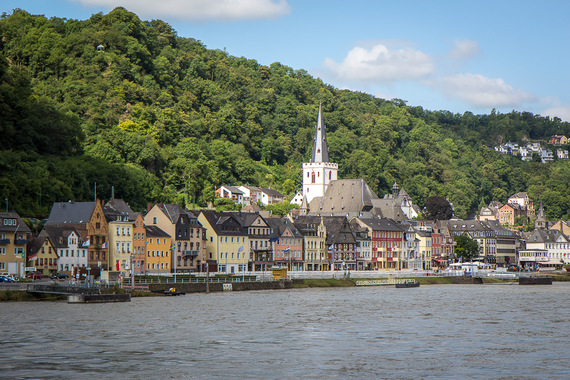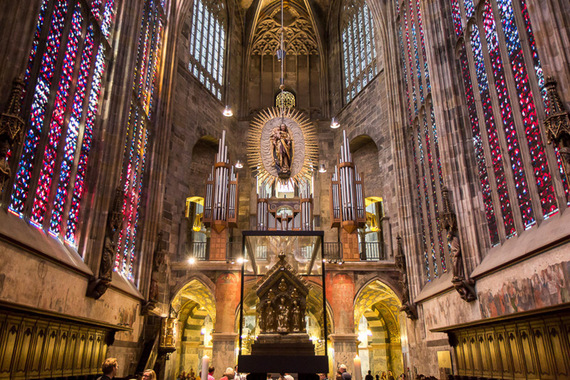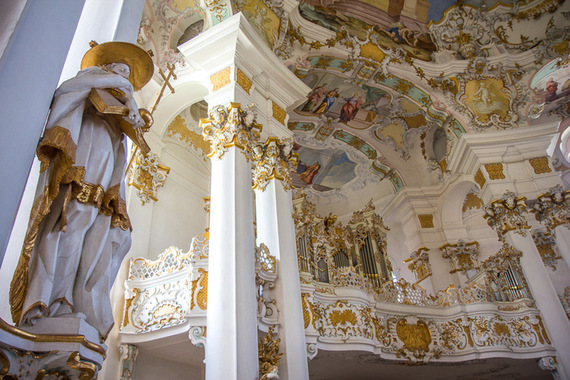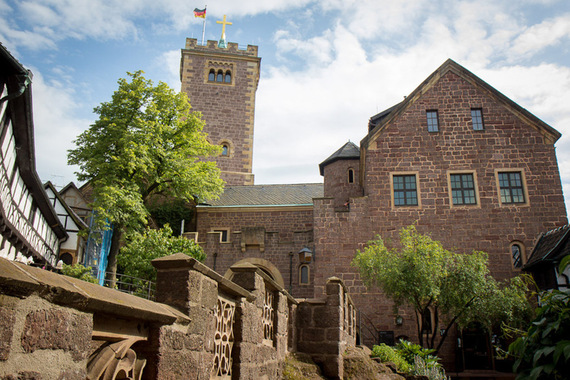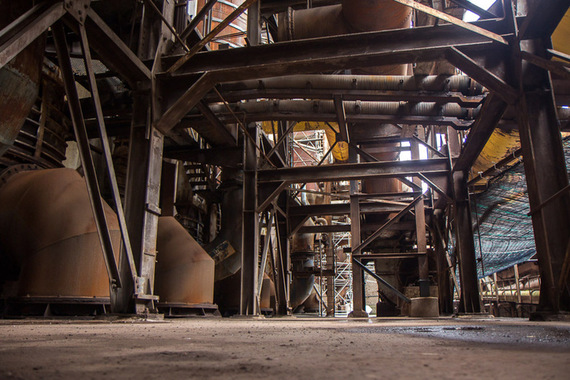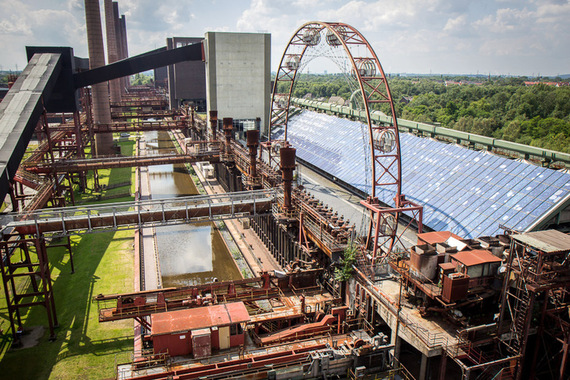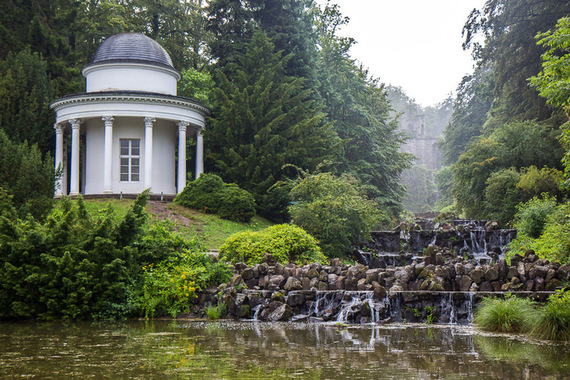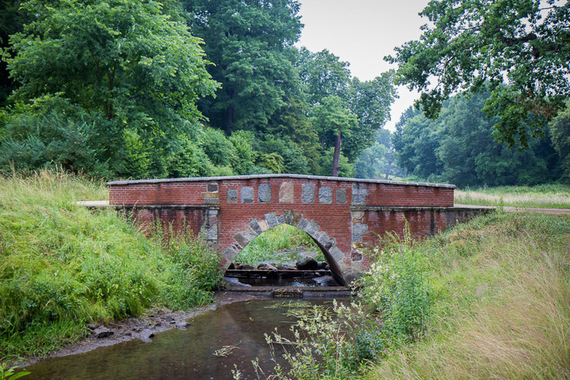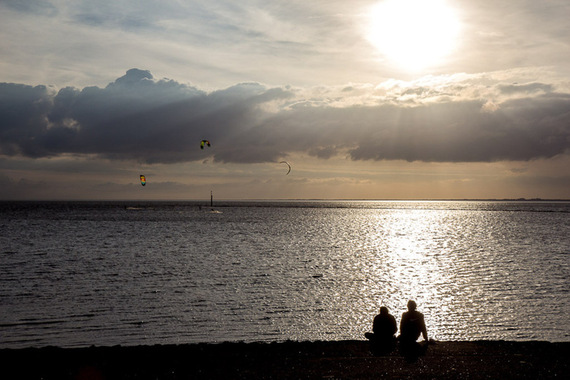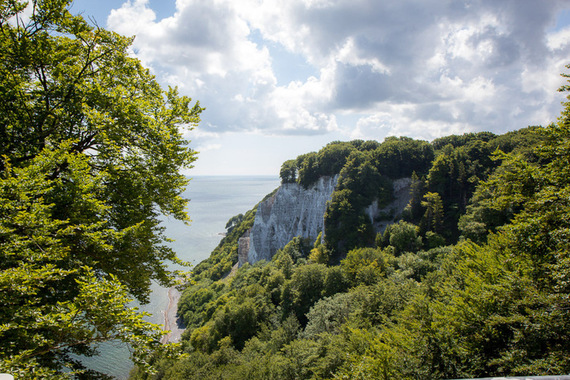On the edge of Lake Constance, small wooden huts sit above the water, held up by stilts -- a reconstruction of the pile dwellings that ancient man lived in 7000 years ago in this part of Germany. Just kilometers away, the monastic island of Reichenau was an epicenter of religious art during the 10th and 11th centuries.
Photo by Michael Turtle
In the city of Cologne, one of the world's largest cathedrals now dominates the skyline after the 600 years it took for construction. Just a short train ride away, you can find the Zollverein Coal Mine, a temple for the rapid industrial development of the country in the 19th and 20th centuries.
All across Germany, these testaments to the country's history are scattered through the landscapes and in urban centers. This is a land with thousands of years of events that have shaped the whole world as we know it. Empires have risen and fallen, wars have been won and lost, and religions have been created and split apart.
Photo by Michael Turtle
39 World Heritage Sites in 30 days was an incredible history lesson about the different eras of the German story. Each place is on the list for a specific reason and has a particular significance. Some are visually more spectacular than others, but each one has an interesting tale to share.
It would be unfair to say I have 'favorites' - but there are certainly many that stand out more than others. Let me briefly share some of the highlights of Germany's World Heritage Sites.
Follow more of Michael Turtle's travels on Findery
Churches
The first German site to be added to the World Heritage List was Aachen Cathedral. It is one of the most significant religious buildings in the country and was built by Charlemagne. It was the coronation church of kings and queens for almost 600 years.
Photo by Michael Turtle
In terms of size, Cologne Cathedral is the most impressive. It is 157 meters high and has the largest façade of any church in the world. The size of the interior is breathtaking and a true marvel.
Photo by Michael Turtle
At the other end of the scale is the small Pilgrimage Church of Wies in the south of Germany. From the outside it appears to be just a humble white building in the middle of a paddock but the intricate artworks on the inside of the church are stunning.
Photo by Michael Turtle
Castles and palaces
After churches, Germany is probably best known for its castles and palaces. The nobility of the country demonstrated their wealth with grand residences that also served as protective fortresses.
On a hill above the city of Eisenach is Wartburg Castle, a large imposing compound that was built a thousand years ago. Over the centuries, there have been additions and modifications that mean a tour through the castle is a bit of a historical journey through the architecture.
Photo by Michael Turtle
Just an hour from Berlin is the collection of palaces at Potsdam. These were constructed in the 18th and 19th centuries by the Prussian kings. The most famous is Sanssouci which is more of an elegant summer house. The larger New Palace is the kind of building you would expect from royalty, though.
Photo by Michael Turtle
City centers
Many of Germany's old town centers have also been designated as World Heritage Sites. They represent the great wealth that these cities once had or the unique urban landscapes that influenced town planning across Europe.
For instance, Regensburg in the southeast of the country shows a blend of architectural styles that were adapted into old Roman buildings. The charming city on a river has a mix of ancient, Gothic, and Romanesque styles with a lovely market, city hall, and cathedral.
Photo by Michael Turtle
Further north, Quedlinburg feels like the perfect medieval town. The original layout from the Middle Ages has been maintained and the houses along the narrow streets and alleyways create an authentic atmosphere. It could be a movie set - and, in fact, it is sometimes used as the set of films.
Photo by Michael Turtle
Architecture
Aside from the architecture found in overall town centers, there are some specific buildings that have been included on the World Heritage List because of their significance.
The Fagus Factory in the small town of Alfeld is one of these. The orange brick building may seem normal by today's standards, but it was revolutionary at the time. It was constructed in 1910 and placed an emphasis on bright and comfortable working conditions. The brave shift in priority had a big effect on industrial architecture across the world.
Photo by Michael Turtle
Similarly, the Bauhaus movement that emerged from the city of Dessau was extremely influential. The original Bauhaus Building can be visited and gives an excellent insight into the style that is so common in modern construction and industrial design today.
Photo by Michael Turtle
Industrial
During the industrial age, Germany became a powerhouse in Europe and the need for the raw materials for construction and production grew. Huge factories and plants were established - mainly in the west - that played a large part in the economic success of the country.
The Völklingen Ironworks started operation in 1883 and was a critical part of the industrial landscape of Germany in the 1900's. More than 17,000 people worked here during its peak. Although it closed in 1986, it has been preserved and is an incredible (and enormous) metal jungle to explore.
Photo by Michael Turtle
The Zollverein Coal Mine near Essen is another significant industrial site in the west of Germany and it was in use for almost 150 years. By the Second World War, it had an output of about 3.6 million tons. What makes the mine so interesting from a heritage perspective is the design. Above ground, the aesthetics of the buildings were intended to be pleasant to look at, while all the dirty work happened below ground or inside the structures.
Photo by Michael Turtle
Gardens
Some of the most relaxing World Heritage Sites to visit in Germany are the expansive gardens that have been styled into perfect landscapes.
The Bergpark Wilhelmshöhe is one of the defining attractions in the city of Kassel. It is more than 2.5 kilometers square and takes hours to walk through. It rises up a slope from the city and is the world's second largest hillside park. With lakes, waterfalls, castles, and a large forest, it is a magnificent example of European garden art.
Photo by Michael Turtle
Muskauer Park is much larger - so big, in fact, that it is spread across the border with Poland. It was conceived by a landscape gardener and travel writer who designed it in the early 19th century. It is 830 hectares large and has a man-made canal, a glasshouse, a hillside park, and lots of small beautiful bridges. It is easy to spend the whole day wandering through the park and seeing how all the elements fit together.
Photo by Michael Turtle
Natural
Of the 39 World Heritage Sites in Germany, three of them are considered to be 'natural' sites, rather than 'cultural'. These places are included in the list because they have significant or unique aspects that make them worth protecting as part of global heritage.
The Wadden Sea, to the north of the country, is one of these. It is the largest unbroken system of intertidal sand and mud flats on the planet. More than 10,000 animal and plant species live around these coastal wetland environments that change constantly throughout the day with the movement of the tides.
Photo by Michael Turtle
Across the country, there are five patches of ancient beech forest that have also been protected. These trees once covered most of Europe but were gradually cut down by humans to clear the land for agriculture or to use for construction. It's fascinating to imagine what the continent would have looked like when it was all like this, especially as the beech trees create a unique mood because of the way they stop the sunlight from reaching the ground.
Photo by Michael Turtle
It may have been an intense journey to see all of these sites. There may have been some occasions when I just wanted a day off to relax in these beautiful towns I was passing through. But I am pleased I achieved my mission and feel like I have a much better appreciation of German culture and history because of it.
Post by Michael Turtle of Time Travel Turtle on behalf of Findery. Follow more of his travels find him on Findery.

